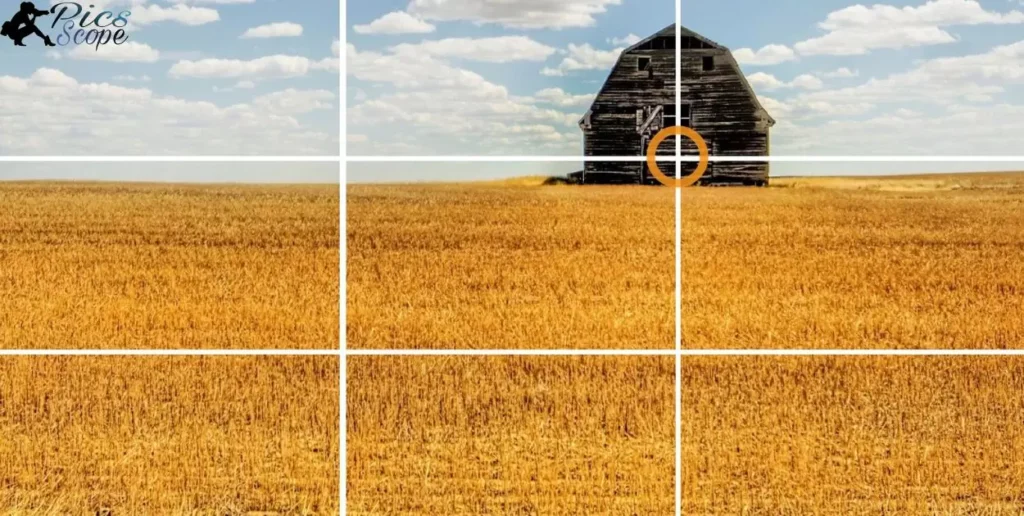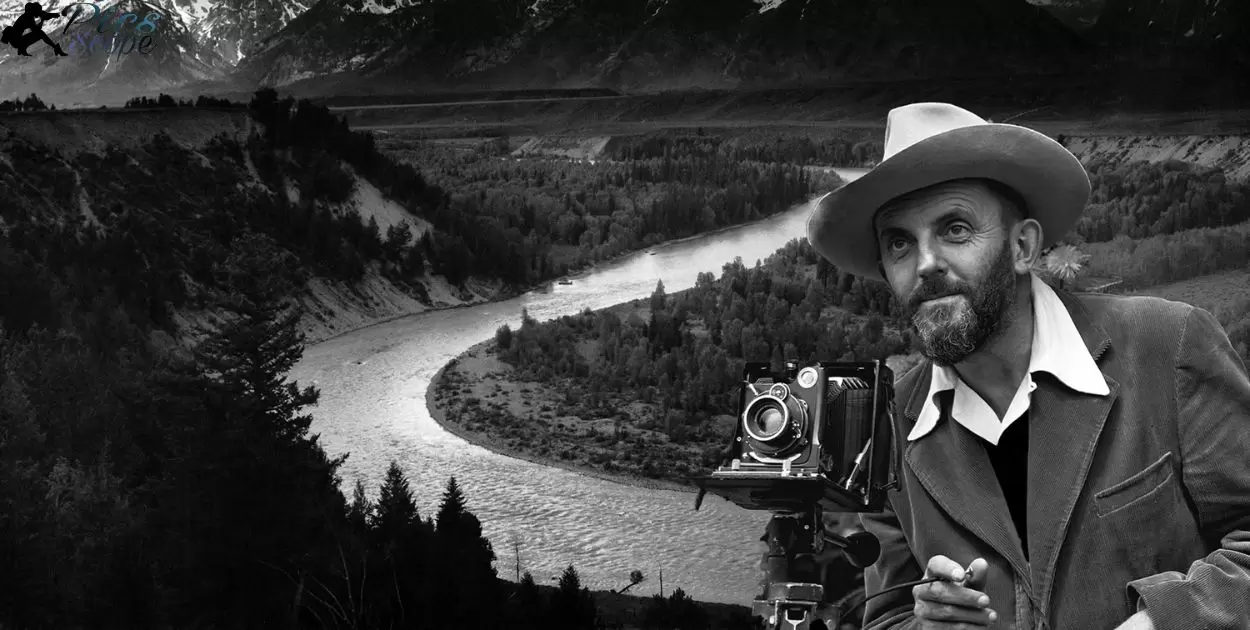The Zone System in photography, developed by Ansel Adams and Fred Archer in the early 1940s, is a technique for controlling exposure and film development. It divides the tonal range into ten zones, providing a systematic way to manage contrasts and achieve desired image results.
Who developed the Zone System in photography? This question opens the door to the intriguing history of photographic techniques. Ansel Adams, an iconic American photographer, collaborated with Fred Archer to create this revolutionary method, influencing generations of photographers.
Ansel Adams, born in 1902, is a pivotal figure in the Zone System’s development. His mastery of landscape photography, coupled with a commitment to precision and technical excellence, left an indelible mark on the art. Beyond his images, Adams’ legacy endures as a driving force in the artistic and technical realms of photography.
What Was The Reason And Importance Of The Zone System For Adams?
Ansel Adams embraced the Zone System to control exposure and achieve desired tonal ranges in his photographs. This technique allowed him to finely adjust light and shadows, ensuring every detail was captured vividly. The Zone System became crucial for Adams as it empowered him to translate his creative vision into meticulously crafted black-and-white images.
The importance of the Zone System for Adams lay in its ability to provide a systematic approach to exposure. By dividing the tonal range into zones, he gained precise control over highlights, midtones, and shadows. This method not only enhanced the technical quality of his photographs but also became a cornerstone of his iconic landscape photography style.
What Is Zone System In Photography?

The Zone System in photography helps control exposure and tonal range. Photographers use it to ensure proper brightness and contrast in their images. Essentially, it divides scenes into different zones, each representing a specific level of brightness.
By understanding the Zone System, photographers can capture details in both shadows and highlights. This technique enhances the overall quality and depth of their photographs. In essence, mastering the Zone System empowers photographers to Get Photography Leads by achieving balanced and impactful shots.
What Is Ansel Adams Zone Theory?
Ansel Adams Zone Theory helps photographers understand exposure and contrast. It divides a scene into different zones, from black to white. By placing elements within these zones, photographers control the tonal range.
This theory guides photographers in achieving desired contrasts and tones. It’s a foundational concept in black and white photography. By mastering it, photographers can create impactful and well-balanced images.
Ansel Adams Zone System Book
Ansel Adams introduced the Zone System, a pivotal concept in photography. This system helps photographers control exposure and achieve desired tones in their images. Adams shared his techniques and insights in his influential book.
In his book, Adams breaks down the Zone System into understandable steps. He provides practical examples and visual aids to guide photographers. By studying his methods, photographers can enhance their skills and create stunning, well-exposed photographs.
Which Photographer Invented The Zone System?
Ansel Adams, the renowned American photographer, pioneered the Zone System. This technique revolutionized photography by providing precise control over exposure and development. Adams introduced the Zone System in the 1940s, emphasizing tonal range and ensuring optimal image quality in black and white photography.
Adams’ Zone System categorizes tones into ten zones, from pure black to pure white. Photographers use this method to manipulate exposure and achieve the desired level of contrast and detail in their images. By mastering the Zone System, photographers gain a powerful tool for creating visually striking and technically precise photographs.
How Did the Zone System Revolutionize Photography Techniques?

The Zone System transformed photography by offering precise control over exposure and development. Introduced by Ansel Adams, this method changed how photographers approached capturing and processing images. Instead of relying on guesswork, they now had a systematic approach to achieve desired tonal ranges and contrasts.
With the Zone System, photographers categorize tones into ten distinct zones, from pure black to pure white. This categorization enables precise manipulation of exposure and development in photography. As a result, photographers can capture scenes with enhanced detail, dynamic range, and visual impact. This systematic approach revolutionized photography techniques, setting a new standard for quality and creativity.
The Core Principles of the Zone System
The Zone System simplifies exposure control in photography. Ansel Adams developed this method to achieve optimal tonal range in images. By categorizing tones into ten zones, photographers gain precision in capturing details from shadows to highlights.
Understanding the core principles involves mastering each zone’s specific characteristics. Photographers use this knowledge to adjust exposure and contrast effectively. The Zone System remains a fundamental technique, enabling photographers to create balanced and visually appealing compositions.
Application of Zone System in Different Photography Genres
The Zone System’s versatility extends across various photography genres. This technique adapts to different lighting conditions and subjects, ensuring consistent results. Below is a table highlighting the application of the Zone System in diverse photography genres:
| Photography Genre | Zone System Application | Key Benefits |
| Landscape Photography | Control tonal range in expansive scenes | Achieves detail from foreground to sky |
| Portrait Photography | Manages contrast for flattering portraits | Ensures balanced skin tones and highlights |
| Wildlife Photography | Adjusts exposure for dynamic subjects | Captures intricate details in varying light |
| Architectural Photography | Balances interior and exterior light | Preserves textures and contrasts in structures |
| Fine Art Photography | Enhances mood and atmosphere | Allows creative control over tonal variations |
Advantages and Limitations of Using the Zone System
The Zone System offers photographers precise control over exposure and tonal range. This control helps in capturing images with optimal detail and contrast, especially in black and white photography. By mastering the Zone System, photographers achieve consistent and high-quality results in their work.
The Zone System may have its limitations for some photographers. It requires a thorough understanding and practice to implement effectively. Additionally, in fast-paced or unpredictable shooting environments, applying the Zone System techniques might not always be practical. Despite these limitations, many photographers value its advantages and continue to incorporate its principles into their workflow.
Evolution of Photography Techniques Post Zone System Introduction
After the introduction of the Zone System, photography techniques began to shift. Photographers gained more control over exposure and tonal range. This newfound precision allowed for greater creativity and consistency in image capture.
As technology advanced, the Zone System’s principles influenced both film and digital photography. Photographers adapted these techniques to suit modern equipment and workflows. Today, the legacy of the Zone System continues to inspire innovative approaches in capturing and developing striking images.
Where Can You Learn More About the Creator of the Zone System in Photography?
To learn more about the creator of the Zone System in photography, start with exploring books authored by this innovator. These resources provide insights into the development and application of the technique. Additionally, attending photography workshops or courses that focus on the Zone System can deepen your understanding and skills.
Online platforms and forums dedicated to photography are valuable resources as well. Engage in discussions, ask questions, and seek recommendations from experts in the field. By immersing yourself in these learning opportunities, you’ll gain a comprehensive understanding of the Zone System’s creator and their significant contributions to photography.
Resources and Books Authored by the Zone System Developer
Ansel Adams, one of the creators of the Zone System in photography, authored numerous books and resources on the subject. In these materials, he shared practical insights and techniques for mastering the Zone System, making it accessible to photographers of all skill levels.
The straightforward language and clear examples in Adams’ books make learning the Zone System an enjoyable and educational experience. From “The Negative” to “The Print,” Adams wrote extensively, offering step-by-step guidance on implementing the Zone System.
These resources remain valuable tools for photographers seeking to enhance their understanding of exposure, contrast, and creative control in black-and-white photography. Adams’ legacy extends not only through his iconic images but also through the knowledge he imparted in his writings, making the Zone System an enduring and accessible photographic methodology.
Photography Workshops and Courses Exploring the Zone System
Photography workshops and courses delve into the Zone System, a method created by Ansel Adams and Fred Archer in the 1940s. This system, used for black-and-white film, divides the tonal range into ten zones, aiding photographers in managing exposure and achieving desired contrasts.
In these workshops, participants learn hands-on techniques for applying the Zone System in their photography. Instructors guide learners in practical exercises, helping them grasp the nuances of this method and develop skills to create impactful black-and-white images. The workshops provide a dynamic and interactive environment for photographers to explore the artistic and technical aspects of the Zone System.
Online Platforms and Forums Discussing Zone System Techniques
In the realm of photography, various online platforms and forums serve as vibrant spaces for discussing and sharing insights into Zone System techniques. Here’s a snapshot of some popular platforms where photographers engage in conversations about this method:
| Platform | Description |
| Photography Stack Exchange | Q&A platform for photographers to discuss Zone System intricacies. |
| DPReview Forums | Community-driven discussions on Zone System applications and troubleshooting. |
| Reddit (r/Photography) | Subreddit fostering conversations and sharing experiences related to the Zone System. |
Exhibitions Featuring the Work and Contributions of the Innovator
Exhibitions showcase the work and contributions of innovators in a dynamic and engaging manner. These events highlight the impact of their ideas and creations on various fields. Attendees get a firsthand look at the innovator’s journey, from initial concepts to groundbreaking achievements.
Such exhibitions bring together a diverse audience, fostering a shared appreciation for innovation. They provide a platform for individuals to interact with the innovator’s work, promoting a deeper understanding of their contributions. Through these events, the innovator’s legacy is celebrated and continues to inspire new generations.
What Are the Key Components of the Zone System in Photography?
The Zone System in photography consists of key components that aid photographers in achieving optimal exposure and tonal control. One crucial element is the division of the tonal range into ten zones, from deep shadows to pure highlights.
This systematic approach helps photographers assess and adjust their exposure settings for a well-balanced image. Another essential component is the use of a light meter to measure the brightness of different parts of the scene.
By understanding the tonal values and placing them within the zones, photographers can make informed decisions about aperture, shutter speed, and film development. This practical application of the Zone System empowers photographers to capture images with the desired level of contrast and detail.
Breaking Down the Ten Zones in the Photography System
The Photography System features ten zones that help control exposure and contrast in images. Developed by Ansel Adams and Fred Archer in the 1940s, it simplifies the process for photographers.
Each zone represents a specific level of brightness, from deep shadows to pure highlights. Photographers use these zones to ensure balanced and well-exposed pictures. Ansel Adams’ collaboration with Fred Archer on this system has had a lasting impact on how photographers approach and control contrast in their work.
Importance of Metering and Exposure Control in the Zone System
- Metering and exposure control are crucial in the Zone System for achieving desired image results.
- Proper metering helps photographers measure the light in a scene, determining the exposure settings needed.
- The Zone System relies on precise exposure control to place different tonal values in their respective zones.
- Mastering metering and exposure allows photographers to effectively use the Zone System and create well-balanced photographs.
Techniques for Developing and Printing Using the Zone System
The Zone System is a method for controlling exposure and development in black-and-white photography. Developed by Ansel Adams and Fred Archer in the 1940s, it divides the tonal range into ten zones. This technique helps photographers achieve precise control over contrasts and tonality in their images.
To use the Zone System, photographers assess the scene’s brightness and place important elements in specific zones. By adjusting exposure and development accordingly, they can capture a wide range of tones. This approach provides a systematic and practical way for photographers to enhance the quality and impact of their black-and-white prints.
Case Studies Highlighting Successful Application of Zone System
Zone System in photography, created by Ansel Adams and Fred Archer, finds successful applications in various case studies. Photographers use it to precisely control exposure and develop black-and-white film, ensuring optimal image quality.
These case studies showcase the practical effectiveness of the Zone System in achieving desired contrasts and tonal ranges, making it an essential tool for photographers seeking precision in their work. In these examples, the Zone System proves versatile, adapting to different photographic scenarios.
Its systematic approach allows photographers to manage highlights and shadows effectively, resulting in images that stand out for their clarity and visual impact. These case studies underline the practical utility of the Zone System, demonstrating its significance in achieving successful and visually striking photographic outcomes.
When And Where Were The Earliest Photographs Developed?
The earliest photographs were developed in the 19th century. They emerged during the 1820s and 1830s, marking the dawn of photography. This breakthrough occurred in Europe, particularly in France and England.
As inventors like Nicéphore Niépce and Louis Daguerre pioneered the early photographic processes. These innovators laid the foundation for the development of photography, capturing images that paved the way for the visual storytelling we experience today.
You Should Never Consider Photo Editing In A Critique.
In a critique, avoid thinking about photo editing. Editing might distract from the main points of discussion. Instead, focus on the composition, lighting, and overall impact of the original photo. Discussing these aspects directly can lead to more constructive feedback.
Photo editing should not be part of critique considerations. Keep the discussion centered on the photographer’s skills in capturing the moment. Evaluating the raw image helps provide feedback that is more relevant and beneficial for the photographer’s growth.
Which Photographer Shot Slightly Out Of Focus?

A photographer who intentionally shot slightly out of focus created a distinctive style. This approach added a unique and artistic touch to the images, deviating from the traditional pursuit of sharpness. The deliberate use of soft focus in photography became a signature technique for this creative individual.
This unconventional method challenged the conventional norms of photography. Instead of adhering strictly to technical precision, the photographer embraced a blurred aesthetic, injecting a sense of emotion and mood into the visual narrative. This intentional departure from sharpness created a compelling and memorable body of work that resonates with those who appreciate the expressive power of slightly out-of-focus images.
Who Developed The Zone System In Photography Quizlet?
The Zone System in Photography, covered on Quizlet, was developed by Ansel Adams and Fred Archer in the early 1940s. Ansel Adams, a renowned American photographer, collaborated with Archer to create this technique for precise exposure control and film development. It’s a key concept in photography education, teaching how to manage tonal ranges effectively.
Quizlet offers a helpful platform for learning about the Zone System’s development. Ansel Adams and Fred Archer’s collaborative efforts in the 1940s brought about this technique, influencing the way photographers control exposure and contrast in their images.
Who Created The Zone System And Under What Light Conditions Is It Most Effective?
The Zone System in photography was created by Ansel Adams and Fred Archer. They developed it during the 1940s to control exposure and film development. This technique becomes most effective in varied lighting conditions, helping photographers achieve desired contrasts and tones in their images.
Ansel Adams, along with Fred Archer, devised the Zone System, aiming for greater control. It thrives in diverse light scenarios, allowing photographers to manage exposure systematically and obtain optimal results.
FAQ’s
Who are the creators of the Zone System in photography?
Ansel Adams and Fred Archer collaborated to develop the Zone System in the early 1940s.
What was the motivation behind creating the Zone System?
Ansel Adams and Fred Archer aimed to achieve greater control over exposure and development, leading to the invention of the Zone System.
How does the Zone System contribute to photography?
The Zone System provides a systematic approach to managing contrasts and achieving desired image results by dividing the tonal range into ten zones.
Can the Zone System be applied to color photography?
While originally designed for black-and-white photography, the principles of the Zone System can be adapted for color photography with some modifications.
What is Ansel Adams’ legacy in the world of photography?
Ansel Adams, born in 1902, not only left an indelible mark as a master of landscape photography but also as a pioneer in the development of the Zone System, influencing generations of photographers.
Conclusion
The Zone System in Photography stands as a pivotal innovation, meticulously crafted by the collaborative efforts of Ansel Adams and Fred Archer in the 1940s. This method revolutionized the way photographers control exposure, dividing the tonal range into ten zones for precise manipulation.
Delving into the question Who developed the Zone System in Photography? reveals the rich legacy of Ansel Adams, an influential figure born in 1902. His dedication to technical excellence and the art of capturing landscapes not only shaped the foundations of photography but also left an enduring impact on how photographers approach their craft today.







